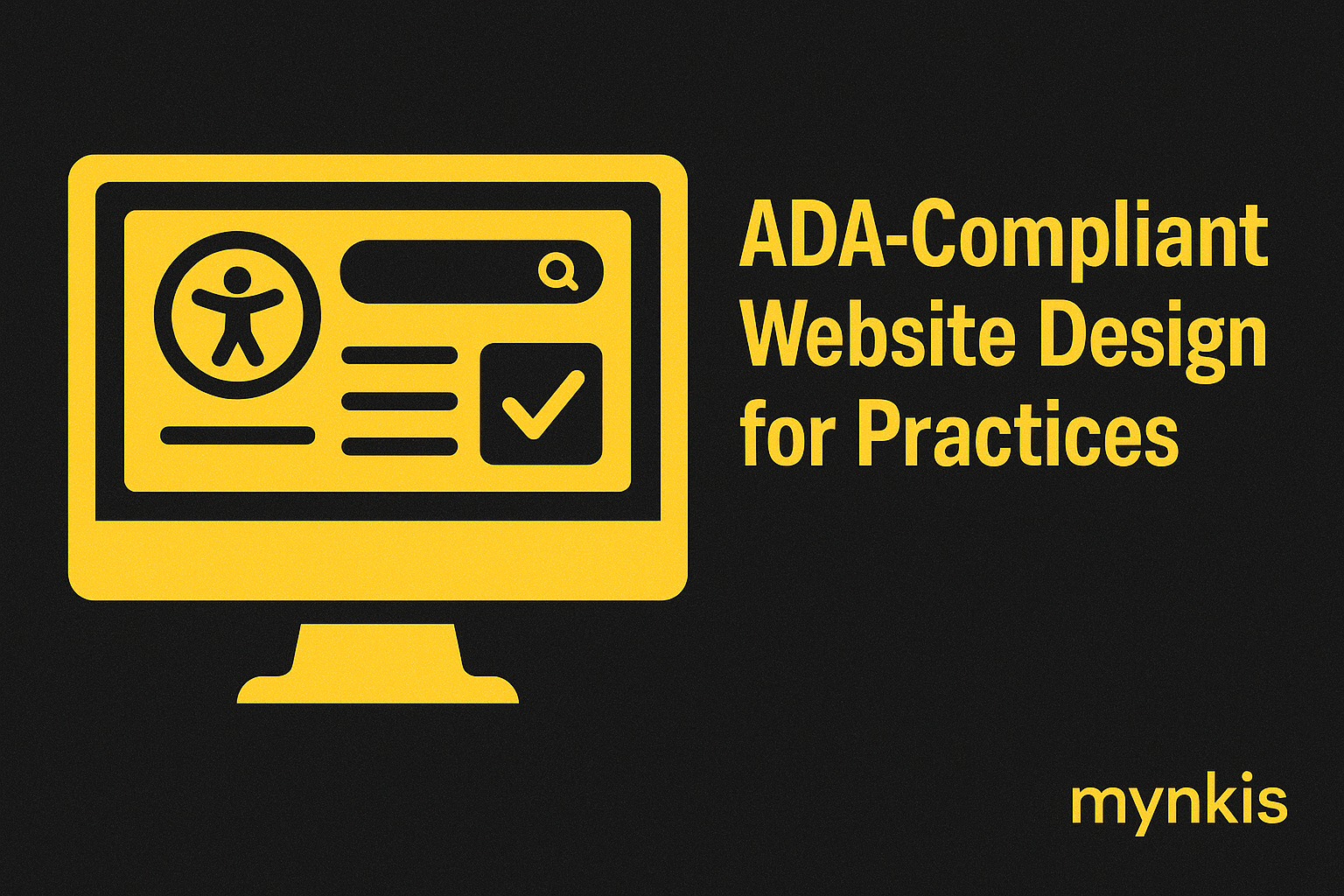Schedule a Demo
In my work with various practices, I've seen firsthand how an accessible website can dramatically enhance the user experience for people with disabilities. The Americans with Disabilities Act (ADA) mandates certain accessibility standards, and non-compliance isn't just about potential legal repercussions; it's about inclusivity and reach. Your practice's website is often the first interaction potential clients have with your business, and ensuring it's accessible can significantly widen your client base.
The core of ADA compliance revolves around ensuring that your website is usable for everyone, including those with visual, auditory, or physical impairments. WCAG 2.0 or WCAG 2.1 guidelines, which detail specific criteria for accessibility, serve as the backbone for these standards. From proper contrast ratios for readability to ensuring all functionalities are operable through a keyboard, these guidelines are non-negotiable in the design process.
Embarking on the journey to make your website ADA compliant begins with a few fundamental steps. Start with text alternatives for any non-text content, such as images or videos. This ensures that users who rely on screen readers can still access the information. Additionally, organize your content in a logical manner that makes it easy for everyone to navigate, and don't forget the importance of consistent navigation to help users understand where they are on your site at any time.
Color and contrast aren't just aesthetic choices; they're fundamental to accessibility. In my experience, practices often overlook the importance of sufficient color contrast. Aim for a minimum contrast ratio of 4.5:1 for normal text, and 3:1 for large text. This ensures readability for users with low vision or color vision deficiencies. My advice? Use online tools like WebAIM's Color Contrast Checker to validate your color choices before finalizing your website design.
Keyboard accessibility is a critical aspect of ADA compliance that often gets underestimated. Every interactive element on your site should be navigable and operable via keyboard alone. From menu items to buttons and form inputs, ensure that users don't need a mouse to navigate. In workshops I've conducted, I've emphasized how this simple practice can dramatically improve the user experience for individuals with mobility impairments.
In today's mobile-first world, ensuring your website is not only ADA compliant but also responsive on mobile devices is crucial. A website that's accessible on desktop might falter on mobile if not designed with care. Keep in mind that touch targets need to be larger and more spaced out to accommodate users with motor difficulties. I've observed that practices that implement a 'mobile first' approach to design and accessibility tend to reach a broader audience effectively.
Once you've implemented accessibility features, the next crucial step is testing. Use automated tools like WAVE from WebAIM or axe by Deque to initially scan your site for obvious issues. However, nothing beats manual testing and user feedback. Invite people with disabilities to test your site and provide feedback. Their insights are invaluable and can uncover issues that automated tools might miss.
Beyond compliance, there's a robust business case for making your website accessible. Studies have shown that accessible websites often rank better in search engine results due to better user experience and engagement. Moreover, accessibility broadens your market reach. In sessions with C-level executives, I've highlighted how making your services accessible can tap into the disability market, a demographic that holds considerable buying power and loyalty.
Legalities surrounding ADA compliance can be tricky. While no specific legal framework exists for websites, there have been several lawsuits against businesses for inaccessible sites. To navigate this, consult with a legal professional familiar with web accessibility laws. This step can prevent costly legal battles and ensure your practice aligns with the best practices and current regulations.
An often-overlooked advantage of ADA compliance is its positive impact on SEO. Search engines reward user-friendly, accessible websites with higher rankings. For practices, this means improved visibility in search results, leading to more potential clients finding you. Ensure your site structure and tags are clearly defined; descriptive alt texts and proper headings not only aid users but boost your SEO efforts too.
Achieving ADA compliance is not a one-off task but a process of continuous improvement. Technology evolves, and so do the needs of users with disabilities. Regular audits and updates to your website's accessibility features are essential. From my experience, practices that maintain an ongoing commitment to accessibility enjoy long-term benefits in user loyalty and legal protection.
Accessibility isn't just a technical issue but a cultural one within your practice. Educate and empower your team on the importance of accessibility. Whether it's the content creators writing alternative text for images or the developers optimizing keyboard navigation, everyone plays a role. I've worked with teams who, after receiving accessibility training, became advocates for inclusivity in every project they undertake.
If your in-house team lacks the resources or expertise to achieve full ADA compliance, consider leveraging third-party solutions. There are specialized platforms and plugins available that can help bridge the accessibility gap. In choosing these, ensure they meet the WCAG guidelines and have a strong track record of enhancing accessibility without compromising the aesthetics of your site.
Above all, the push for ADA compliance is grounded in an ethical imperative to create an inclusive online environment. It's about ensuring that everyone, regardless of their abilities, can access the services and information your practice offers. This not only aligns with the ethos of many businesses but also ensures you're serving the community to the best of your ability.
As we move forward, the expectations for web accessibility continue to evolve. With increasing global awareness and legislation like the European Accessibility Act coming into play, the landscape of digital accessibility is changing. Practices that stay ahead of these trends, not just following but leading in accessibility efforts, will set themselves apart as pioneers in their field.
